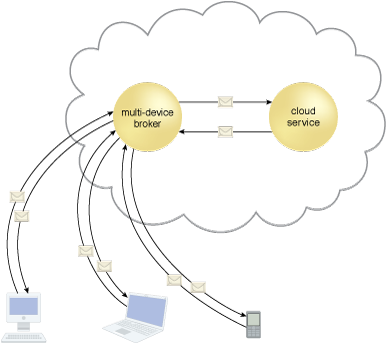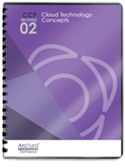Cloud Computing Patterns, Mechanisms > Mechanisms > I - P > Multi-Device Broker
Multi-Device Broker

An individual cloud service may need to be accessed by different types of cloud service consumers, some of which may be incompatible with the cloud service’s published service contract. Disparate cloud service consumers may be differentiated by their hosting hardware devices and/or may have different types of communication requirements. To overcome incompatibilities between a cloud service and a disparate cloud service consumer, mapping logic needs to be created to transform (or convert) information that is exchanged at runtime.
The multi-device broker mechanism is used to facilitate runtime data transformation so as to make a cloud service accessible by a wider range of cloud service consumer programs and devices (Figure 1).
Multi-device brokers commonly exist as or incorporate gateway components, such as:
- XML Gateway – transmits and validates XML data
- Cloud Storage Gateway – transforms cloud storage protocols and encodes storage devices to facilitate data transfer and storage
- Mobile Device Gateway – transforms the communication protocols used by mobile devices
The levels at which transformation logic can be created include:
- transport protocols
- messaging protocols
- storage device protocols
- data schemas/data models
For example, a multi-device broker may contain mapping logic that coverts both transport and messaging protocols for a cloud service consumer accessing a cloud service with a mobile device.

Figure 1 – A multi-device broker contains the mapping logic necessary to transform data exchanges between a cloud service and different types of cloud service consumer devices.
Related Patterns:
This mechanism is covered in CCP Module 2: Cloud Technology Concepts.
For more information regarding the Cloud Certified Professional (CCP) curriculum, visit www.arcitura.com/ccp.
This cloud computing mechanism is covered in:
Cloud Computing: Concepts, Technology & Architecture by Thomas Erl, Zaigham Mahmood,
Ricardo Puttini
(ISBN: 9780133387520, Hardcover, 260+ Illustrations, 528 pages)
For more information about this book, visit www.arcitura.com/books.

